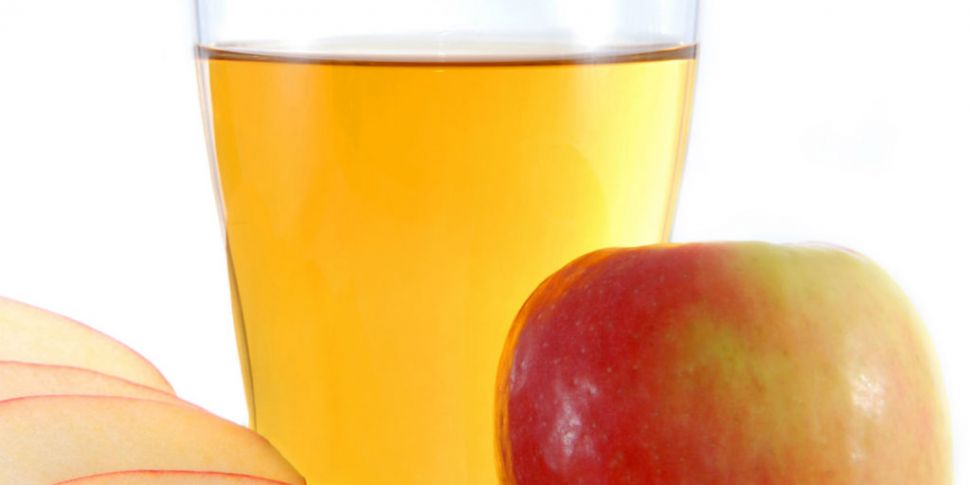Dean McGuinness reviews Longways Elderflower Cider and Hogan’s Wild Elder Cider
TWO COUNTRIES – ONE STYLE OF CIDER
How do you come up with a theme for St. Patrick’s Weekend that blends with the current news about Brexit and broadcasting from Northern Ireland? How about taking a style of drink that is native to both Ireland and England (cider), infused with hedgerow wild elderflower, and do a compare and contrast on the same style of drink made in both Ireland and England? And, just as a nod to St. Patrick’s Weekend, our two drinks are made by Irish cider makers – the first by James Donoghue, a cider-maker based in Tipperary, and the second by Allen Hogan in the Malvern Hills, in Warwickshire in England.
Our two drinks today are ciders (for a slight change). Our first is Longway’s Elderflower Cider from Tipperary, Ireland, and our second is Hogan’s Wild Elder Cider.
Brewing Versus Cidermaking and Provenance –
Provenance is all about the place of origin of something. When it comes to beer, provenance can be a little convoluted. Beer styles often have an historical origin. Certain styles (for example, porter, barleywine, bitter, mild) are associated with England. Pilsner is associated with the Czech Republic and Germany, Helles, Bocks, Kolsch also with Germany, and styles such as Saison are associated with France and Belgium. However, styles are often brewed in countries other than the place of origin of the style.
Brewing ingredients are quite portable. Barley can be grown in various countries where there is a relatively temperate climate (like Ireland). This barley can be malted and transported to wherever it is needed – it is not unusual for American brewers to brew using malted barley from England or across Europe.
The situation with hops can be comparable. It is not unusual for an American IPA to be brewed in any one of a number of countries. The ‘American’ refers to the use of American hops in the brewing process – these hops are grown in different parts of the States, but transported to the breweries that are seeking to achieve the flavours that can be brought into beer by using these ingredients.
But hops have also been transplanted. Hops that are associated with a particular country have been grown in other countries. Genetically, these hops are similar, but the growth of hops in a different environment can have an effect on the flavours that are achieved from these hops. For example, a type of hop grown in Slovenia, and at one time thought to have been a descendant of a locally grown hop, has been found to have parentage from Fuggles hops – a varietal of hop classically associated with England.
So, aside from the country in which a beer is made, the provenance of a beer can be a little convoluted. The location of the brewery that brews the beer can have key relevance (though, this can also be confused with mass market beers that are brewed under licence in a brewery away from the country of origin of the brand). The ingredients may come from various different countries for different beers brewed in that brewery. And the styles to which the beer is brewed may have varying counties of origin, or may not have an historical origin at all.
Understanding the provenance of a beer is not always the most straightforward exercise.
Wine-making and cidermaking probably have more in common than cidermaking and brewing. In all three cases, a sugary liquid is converted into an alcoholic liquid through fermentation with yeast. The key difference lies in where the sugar comes from. With brewing, the base ingredient – malted barley – is a starch source, and the starch from this malted barley is converted into sugar in a warm water through the brewing process. The sugar results from the brewing process in the brewery. In contrast, with wine-making and cidermaking, the sugar develops in the fruit (grape or apple respectively). This happens in the field where the fruit is grown – in the vineyard or in the orchard.
Provenance is central to wine. The place of origin of a grape (where it is grown) is a key factor that allows one to identify with a wine. Given that, in most cases, wine is made close to the place where grapes are harvested, the provenance of the grapes is closely associated with the provenance of the wine making.
The situation is similar with cider. Cider is made (most usually) from apples. Apples need a certain type of climate to thrive – a climate not that different from that suitable to growing barley. However the fact that the apple has already generated its sugar in the fruit means that it is a less robust ingredient than barley. It is quite easy to transport barley – either as malted barley or as a raw grain. With apples used for cider-making, they are most usually pressed close to the place of harvest, and the juice is most often fermented close to the place that the fruit is pressed. As a result, the source of the fruit can be closely associated with the place of cidermaking, and both of these can give a more robust foundation to the provenance of the cider.
In the case of both of our ciders today, they are infused with wild elderflower. Wild elderflower is a hedgerow plant that grows in both Ireland and England. By infusing their ciders with elderflower, this introduces a touch more provenance to these two ciders.
Longways Elderflower Cider –
Cider Style - Medium Sweet Cider infused with Wild Elderflower
Alcohol by Volume - 4.5% a.b.v.
Cider Made by - James O’Donoghue, Longways Cider
Cider Made in - Tipperary, Ireland.
The first thing that one notices about Longways Elderflower cider is the colour – this cider has a pinkish hue that comes from a combination of the fruit juice used and natural colours infused into the cider. The other key infusion in this cider is the Wild Elderflower used in the cider-making process. This wild elderflower is harvested in Tipperary.
Elderflower is a hedgerow plant. Its contribution to the flavour of this cider is central to the cider’s aroma. Perfumy, floral and slightly herbal aromas come through immediately on the nose. These aromas are very interesting in terms of how they provide balance in the cider.
On tasting the cider, the base drink is distinctly medium sweet – the cider has relatively low acidity, and the tannins in the cider are sufficient to provide structure, but are not overly drying in the palate. The sweetness of the cider finds balance from the aroma – the elderflower flavour remains primarily in the aroma, and does not develop into flavour in the mouth. However, the aroma provides a counterpoint to the sweetness of the cider.
This cider has a relatively quick finish – it is clean and refreshing, and very moreish.
Hogan’s Wild Elder Cider –
Cider Style - Bittersweet Cider infused with Wild Elderflower
Alcohol by Volume - 4.0% a.b.v.
Cider Made by - James O’Donoghue, Longways Cider
Cider Made in - Tipperary, Ireland.
Cider apples can be divided into four categories – sweets, sharps, sweets, bittersweets and bittersharps. In all cases, the juice from cider apples contains sugars, which gives sweetness. Two different characteristics of apples can provide counterbalance to this sweetness. Acidity can provide sharpness or sourness to the juice or cider. Tannins in apples can provide bitterness or tannic qualities to the juice or cider. Both acidity and bitterness can act as a counterbalance to sweetness – when either or both are high, it reduces the perceived sweetness of the juice. Sweets are low in acidity and tannins, so the natural sweetness of the juice comes through. Sharps are high in acidity, and this counterbalances the natural sweetness of the juice, allowing the acidity or sourness to be the dominant flavour. In the case of bittersweets and bittersharps, the tannic quality in the apple is high – in the case of the former, providing a balance to the sweetness of the apple, and in the case of the second providing a complementary quality to the acidity of the apple. Most cidermakers use a blend of different types of apple to make their cider, and the blend used dictates the quality of the final juice blend that is the base for the cider.
Hogan’s Wild Elder Cider is based on a blend of bittersweet apples. The sweetness of the cider is evident, but the tannins in the juice provide structure to the cider. The elderflower infused into the cider is evident in the aroma – coming through as a floral, herbal aroma. Contrasting a little with the Longways cider, the elderflower quality of the cider is more infused into the flavour. The floral and herbal quality of the cider comes through in flavour perceived in the mouth, and balances with the bittersweet cider. This floral, herbal flavour provides a counterbalance to the bittersweet cider, and provide depth and complexity to the cider.
Initially, there is a slight sweetness to the finish of this cider which develops as the tannins in the cider develop on the palate and give a drying quality to the finish. The elder aroma and flavour does not linger long into the finish – it cleans away relatively quickly, making the cider moreish. However, the cider has great depth and complexity – while the flavour does not linger in the finish, the structure of the cider provides great length.









